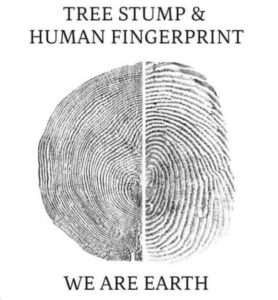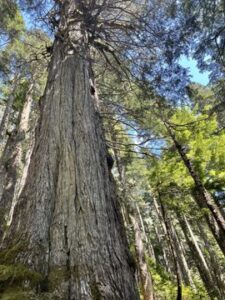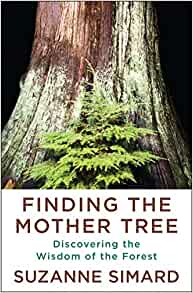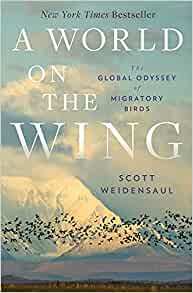Mother Tree
Unfolding catastrophe.
June 5, 2021Social media post by Tzeporah Berman on May 27th:
“Please…just….please act now. This should be illegal. I saw stumps of 1000 year old trees with flagging tape on 2000 year old yellow cedars. It’s like destroying Pantheon or the Sistine Chapel to make a buck. Enough already.”
Tzeporah lives in Vancouver and is the International Program Director for https://www.stand.earth. She is also an adjunct professor at York University and the chair for Fossil Fuel Non-Proliferation Treaty…https://fossilfueltreaty.org
Fresh Air
May 4th, 2021
Trees Talk To Each Other. ‘Mother Tree’ Ecologist Hears Lessons For People, Too
Trees are “social creatures” that communicate with each other in cooperative ways that hold lessons for humans, too, ecologist Suzanne Simard says.
Simard grew up in Canadian forests as a descendant of loggers before becoming a forestry ecologist. She’s now a professor of forest ecology at the University of British Columbia.
Trees are linked to neighboring trees by an underground network of fungi that resembles the neural networks in the brain, she explains. In one study, Simard watched as a Douglas fir that had been injured by insects appeared to send chemicalwarning signals to a ponderosa pine growing nearby. The pine tree then produced defense enzymes to protect against the insect.
“This was a breakthrough,” Simard says. The trees were sharing “information that actually is important to the health of the whole forest.”
In addition to warning each other of danger, Simard says that trees have been known to share nutrients at critical times to keep each other healthy. She says the trees in a forest are often linked to each other via an older tree she calls a “mother” or “hub” tree.
THIS:
[Trees] get old. They do eventually decline. And dying is a process, and it takes a long, long time. It can take decades for a tree to die. In the process of dying, there’s a lot of things that go on. And one of the things that I studied was where does their energy — where does the carbon that is stored in their tissues — where does it go? And so we label some trees with carbon dioxide — with C13, which is a stable isotope — and we watched as we actually cause these trees to die. We stress them out by pulling their needles off and attacking them with budworms and so on. And then we watched what happened to their carbon.
And we found that about 40% of the carbon was transmitted through networks into their neighboring trees. The rest of the carbon would have just dispersed through natural decomposition processes … but some of it is directed right into the neighbors. And in this way, these old trees are actually having a very direct effect on the regenerative capacity of the new forest going forward.
This is a completely different way of understanding how old trees contribute to the next generations — that they have agency in the next generations. And our practices of salvage logging to get rid of dying trees, or trees that have just died or have been burned in wildfires — if we go in and cut them right away, we’re actually short-circuiting that natural process.
Full interview with Dave Davies/NPR’s Fresh Air:
One of the books recommended by President Barack Obama in conversation with the NYTimes Ezra Klein:
“A book I just read, “The Overstory” by Richard Powers, it’s about trees and the relationship of humans to trees. And it’s not something I would have immediately thought of, but a friend gave it to me. And I started reading it, and it changed how I thought about the earth. And it changed how I see things, and that’s always, for me, a mark of a book worth reading.”
Full interview: https://www.nytimes.com/2021/06/01/opinion/ezra-klein-podcast-barack-obama.html
Eight trees were destroyed in May in name of capitalism and concrete next to my place in Sun Valley, Idaho. Unnecessary. And tragic. All were mature, healthy trees. When will we stop? Will we ever? -dayle
‘Unless someone like you cares a whole awful lot,
nothing is going to get better. It’s not.’ -The Lorax
NPR/Dave Davies
Naturalist Traces The ‘Astounding’ Flyways Of Migratory Birds
Did you know that when some migratory birds prepare for flights that can take them thousands of miles, their intestines and digestive organs actually shrink while their heart, lung and leg muscles can double in size? That’s just one of the amazing facts you can learn from our guest, Scott Weidensaul. He spent decades studying migratory birds, reporting on and writing about them and doing fieldwork and tracking and conservation efforts. The scale of bird migration is staggering, involving billions of birds, and the diversity of the species’ mating, nesting and flying habits is awe inspiring. In a new book, Weidensaul writes about what he calls this majestic global pageant and about the threats the animals face. One study found that since 1970, roughly 30% of North American birds have disappeared, more than 3 billion of them. Scott Weidensaul has written 30 previous books, and his articles have appeared in Audubon, National Wildlife and other publications. He co-founded Project SNOWstorm, which tracks and studies snowy owls and is a founder of the Critical Connections project, which is tracking the migration of birds that breed on national park lands in Alaska. His new book is “A World On The Wing: The Global Odyssey Of Migratory Birds.” He joins us from his home in Milton, N.H.
https://www.npr.org/2021/03/29/982232107/naturalist-traces-the-astounding-flyways-of-migratory-birds





